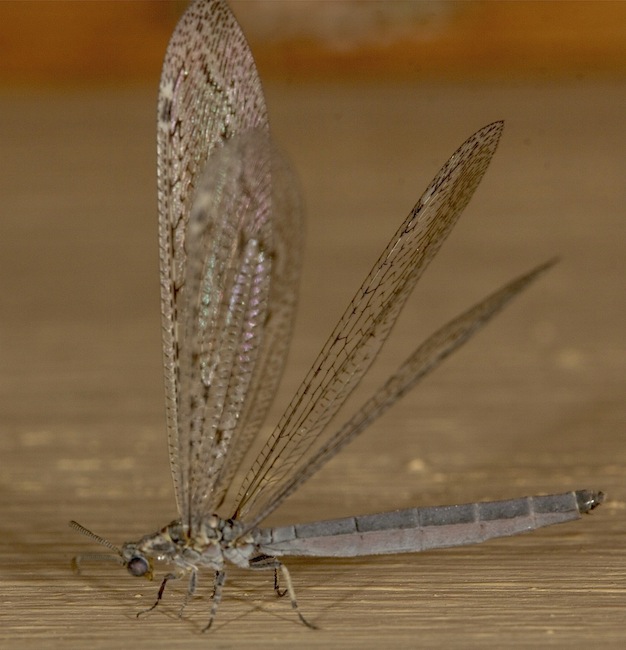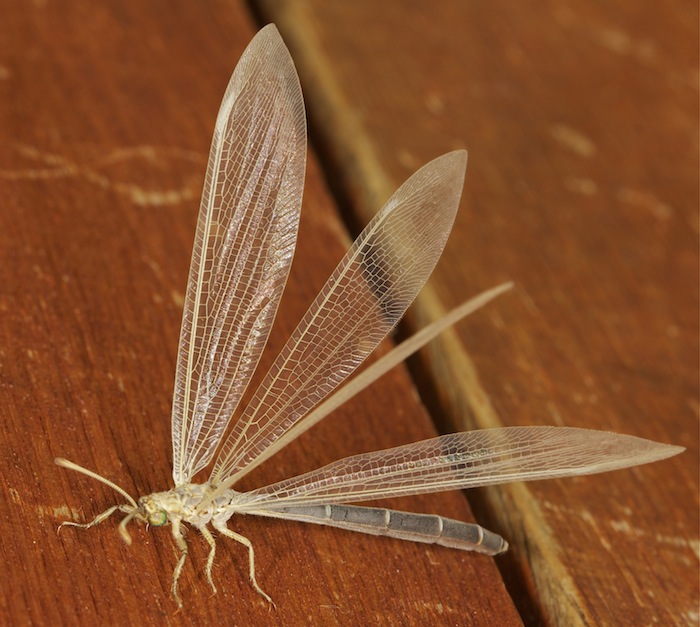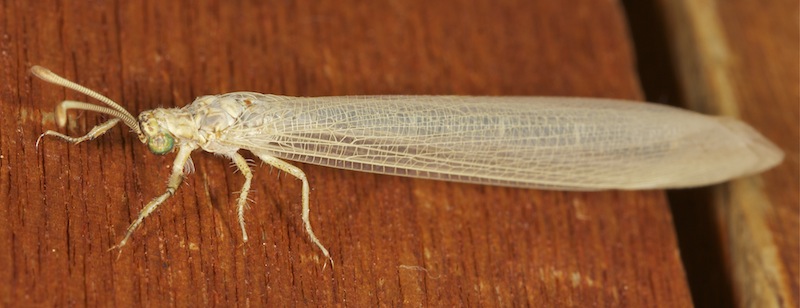Antlion Palparellus flavofasciatus
Family: Myrmeleontidae. Subfamily: Palparinae. Tribe Palparini

© nan
Hardap Game Park, Namibia
Southern Africa harbours 42 of the 88 known species of Palparini. Twenty-nine of the 42 species are endemic to the western parts of the subregion, including Namibia, Botswana, the Western, Northern and Eastern Cape, and North-West Provinces of South Africa. This antlion tribe includes the largest species in the family and, consequently, the largest larvae. A large larva enables these specialist predators to exploit a wide range of prey, but it also jeopardises the safety of the conspicuously large adults. Their great size renders them vulnerable to predators, and palparines have consequently evolved elaborately patterned wings to enhance their camouflage. In many species these patterns mimic the dominant plant species within the biomes in which the antlions occur. This in turn restricts Palparini to the biomes that influenced their evolutionary adaptations. Each palparine species in southern Africa has a closely related sister-species that occurs in a different biome, and they are seldom sympatric.
Genus
Palparellus: Characterized by broad, pale-yellow area on the pronotum, extending dorsomedially along mesoand metatergites. Forewings heavily marked with various shades of brown, and with two diagnostic yellow bands, one basal, the other subapical.
Eight similar looking species in Southern Africa.
Description
Palparellus flavofasciatus is characterized by maculate forewings with two distinct yellow bands, one basal one subapical, and males with dark-brown ectoprocts.
Forewings maculated with yellow and brown; costal area with alternating yellow and brown maculae; base of wing completely maculate; basal yellow band flanked by brown, extending from R to posterior margin; a large brown macule present in middle of wing, extending from R to M; apical yellow band extending from pterostigma to posterior margin; wing apex brown, enclosing several yellow maculae.
Hindwings pale-yellow with three distinct brown bands; base of wing generally immaculate, occasionally with some brown over recurrent vein; basal brown band extending from R to hind margin, dilating posteriorly, enclosing two yellow maculae; median band similar to basal band; apical band covering apex of wing and enclosing a large irregular yellow macule.
Distribution
Found in Namibia and Southern Angola.
Habitat
Open grassland.
Biology
Adults have been recorded from December to April. They occur often in large numbers, and are occasionally attracted to light.
Links:
https://pdfs.semanticscholar.org/4553/d ... d07a56.pdf
https://www.researchgate.net/publicatio ... 0/download




 © nan
© nan